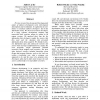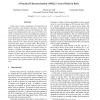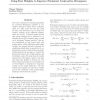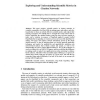499 search results - page 60 / 100 » Why neighbor-joining works |
ICSE
2003
IEEE-ACM
14 years 10 months ago
2003
IEEE-ACM
Preparations for Y2K reminded the software engineering community of the extent to which long-lived software systems are embedded in our daily environments. As systems are maintain...
ICSE
2007
IEEE-ACM
14 years 10 months ago
2007
IEEE-ACM
Previous research has documented the fragmented nature of software development work, with frequent interruptions and coordination. To explain this in more detail, we analyzed soft...
AICT
2009
IEEE
14 years 4 months ago
2009
IEEE
Unlike other wireless technologies, the deployment of 802.11 networks is not limited to operators: access points can easily be installed by end-users for domestic use. This singul...
ICML
2009
IEEE
14 years 4 months ago
2009
IEEE
The most commonly used learning algorithm for restricted Boltzmann machines is contrastive divergence which starts a Markov chain at a data point and runs the chain for only a few...
COMPLEX
2009
Springer
14 years 4 months ago
2009
Springer
This paper explores scientific metrics in citation networks in scientific communities, how they differ in ranking papers and authors, and why. In particular we focus on network eff...




